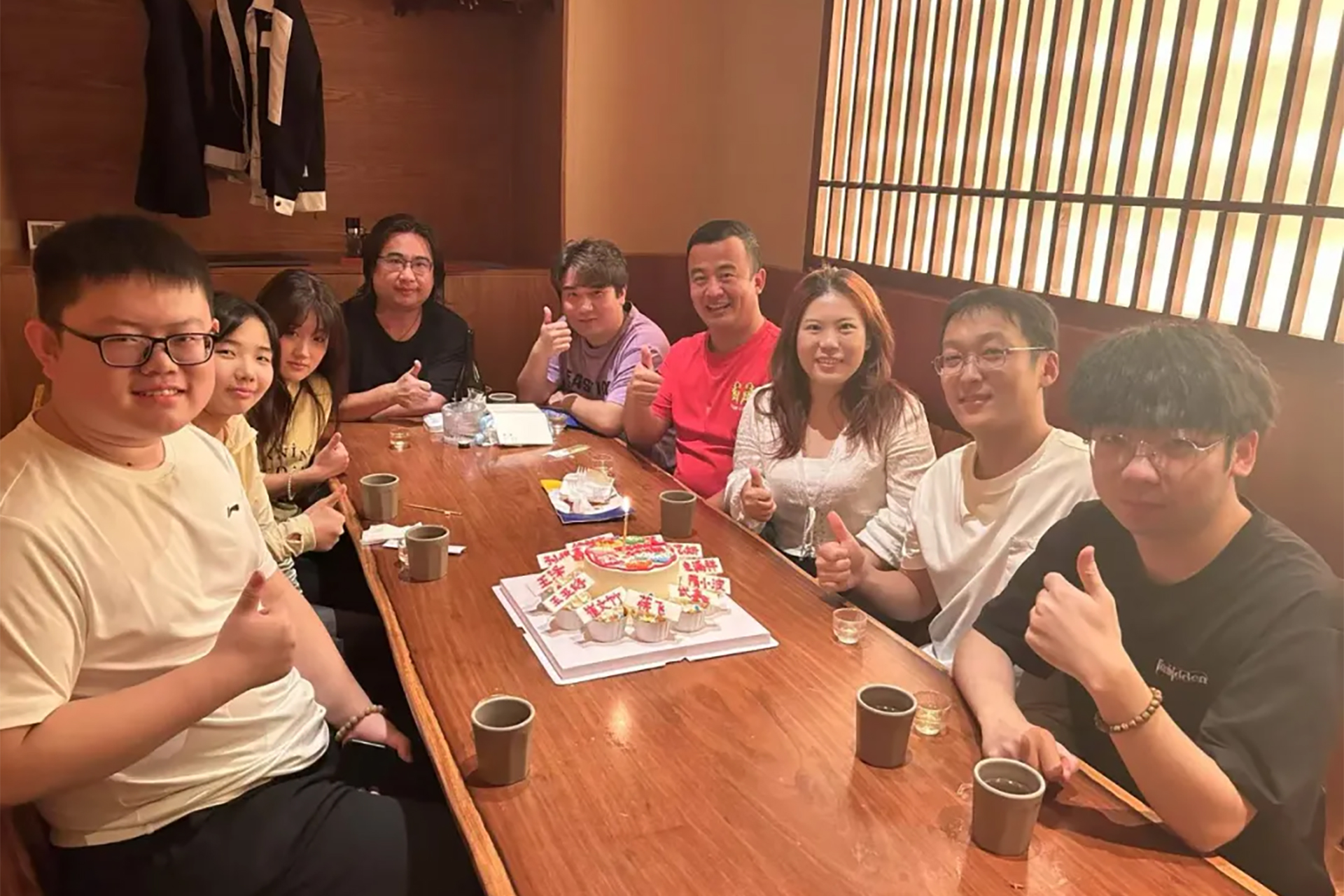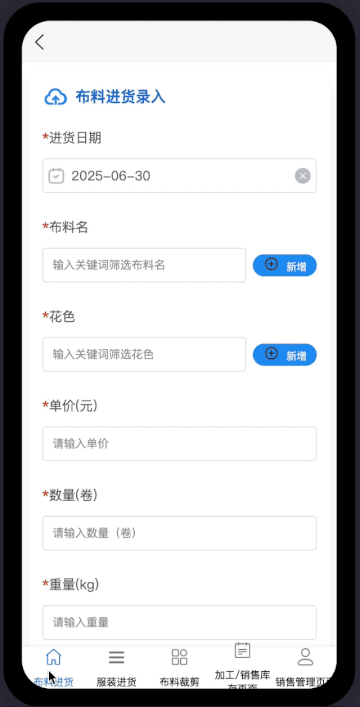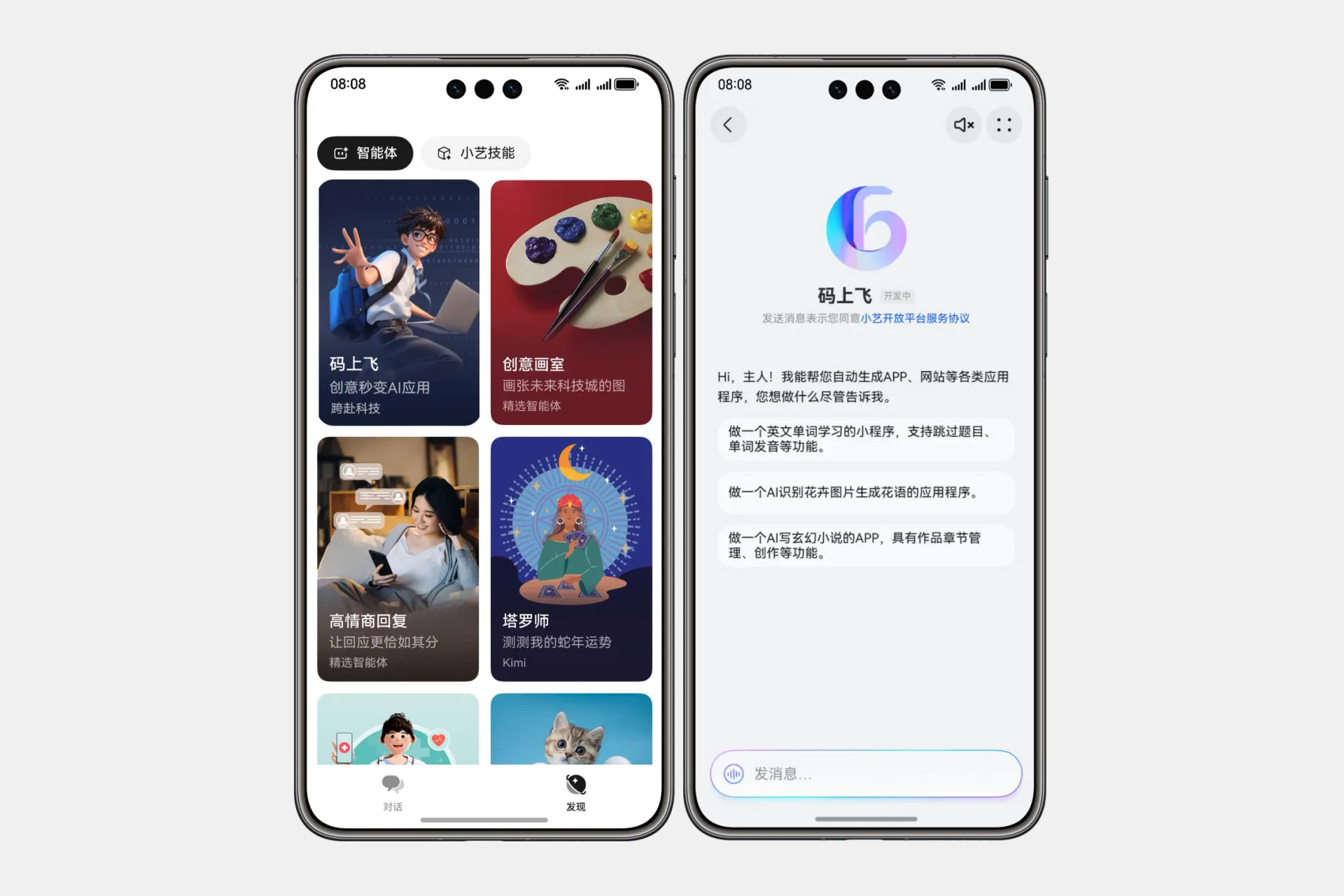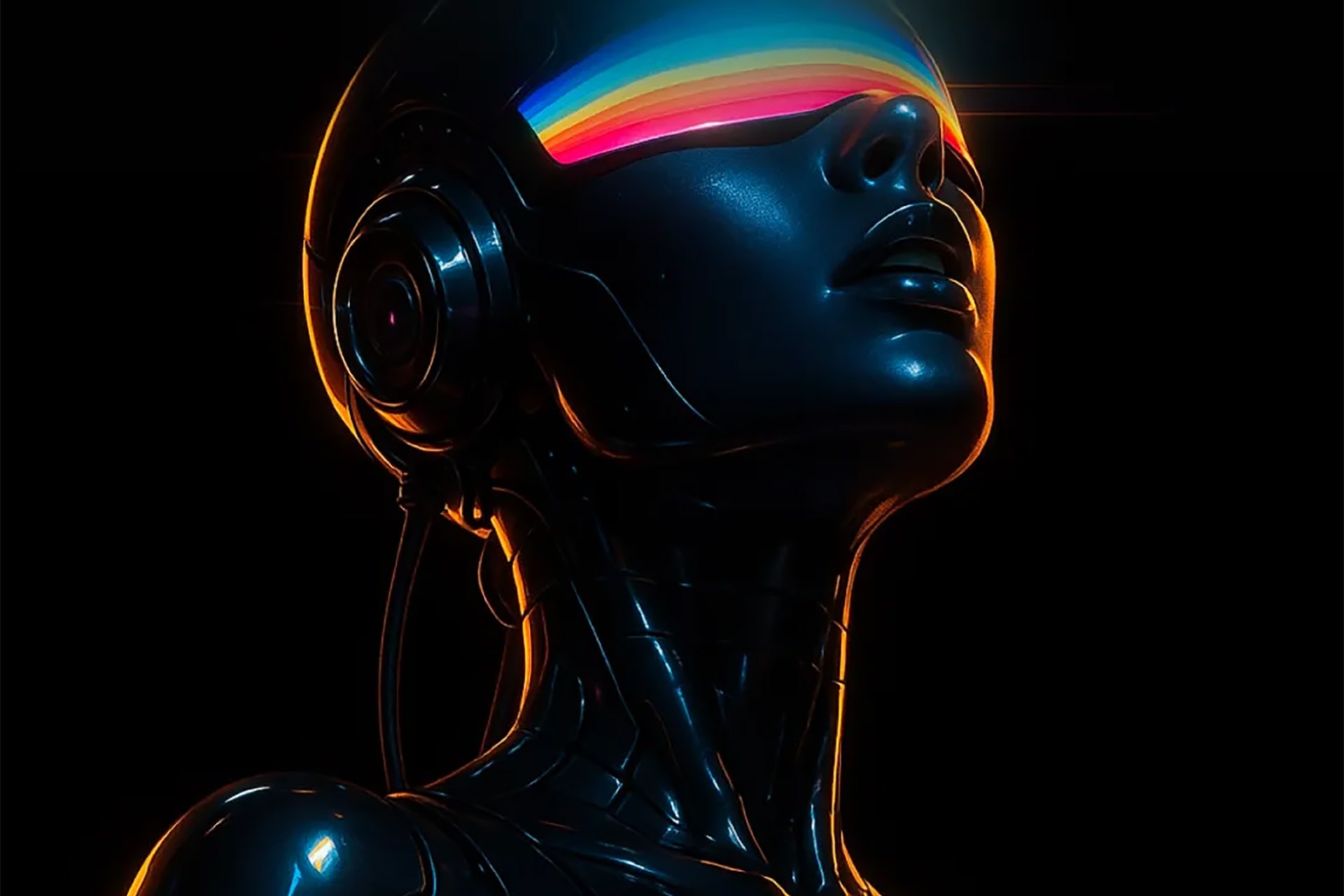100 AI Creators is a weekly series featuring conversations with China’s leading minds in artificial intelligence. As technology evolves, their perspectives shed light on the ideas driving the AI era across borders.
Coding has surfaced as one of the most prominent and competitive verticals in the AI space. It is a domain that AI can format and contextualize with relative ease, and one of the earliest to demonstrate the potential for revenue generation.
From GitHub Copilot to Cursor, and from Replit to Lovable, new AI coding tools continue to launch at a rapid pace, with most securing investor backing. In China alone, more than 30 AI coding tools have emerged, spanning areas such as integrated development environment (IDE) enhancements, code completion, and end-to-end software generation.
CodeFlying, the focus of this AI Now! interview, falls into the end-to-end category. Its defining feature is its orientation toward complete beginners.
Most AI coding tools today are designed to assist developers. GitHub Copilot autocompletes code, Cursor supports human-AI collaboration, and Lovable follows instructions to generate applications incrementally.
CodeFlying adopts a different approach: users are not required to write or view any code. They submit a request, and CodeFlying automatically assembles the frontend, backend, database, admin panel, and test data. The result is a functioning application, ready for deployment.
Not everyone is convinced by this approach. Critics argue that AI coding should focus on eliminating repetitive tasks for professionals, not serving newcomers. Some suggest that only when context windows are significantly larger and model reliability reaches 99% will such tools be viable for mass adoption.
AI Now! asked several experts to try CodeFlying. Feedback included: “feels like a toy,” “too many bugs,” “no real value,” and “why not open source it?”
Founder Wu Xin remains undeterred.
Wu’s target users, he said, are people who “don’t know how to double-click a downloaded file on their phone.” Since launching a little over a year ago, CodeFlying has drawn users from a wide range of backgrounds, including community police officers, essential oil vendors, neighborhood butchers, and bottled water delivery workers.
A technologist by training, Wu is in his early 40s and holds a computer science degree from Lanzhou University. He previously worked at Tencent and ByteDance, across tech cycles from the PC era to the present AI wave. A turning point came in late 2022, when GPT-3.5 successfully completed a coding task he designed. When he asked the model how it accomplished the task, it responded, “Because your open API documentation is on the internet. I read it all.”
That exchange prompted Wu to leave his job and fully commit to building an AI-first product.
Wu’s belief is that as coding becomes more accessible and its cost approaches zero, the strongest demand for AI-generated software will come not from highly digitized markets like the US, but from China’s less developed regions. “Being China first means focusing on going from zero to 60, not from 60 to 100,” he said.
While many of his peers concentrate on model architecture or academic publishing, Wu prioritizes product development speed:
“We have to be more aggressive and move faster, only then can regular people actually use this.”

The following transcript has been edited and consolidated for brevity and clarity.
“Our users are people who check how much they made from selling pork after a game of mahjong”
AI Now! (AN): Many in the industry believe AI coding is too radical a bet for targeting novices. Even big tech firms avoid it. After all, non-programmers make up only 5% of coding tool users.
Wu Xin (WX): It’s a good question and one I get asked a lot.
If we focused on professional developers, as most current AI coding tools do, we’d be chasing a market of around ten million in China and 40–50 million globally. It’s a defined group with clear monetization paths.
But that’s not why I started this company. Entrepreneurship is hard. If you’re just chasing money, there are easier ways to make a better return on investment. You need a strong vision to stay committed. I left a comfortable salary and a stable career in midlife because I want to democratize software creation. Like Prometheus stealing fire, I want to hand digital capability to the people and create immense social value in the process.
Also, I’m not being irrational. I believe the beginner market is at least 20 times larger than the professional one. We’ve seen this kind of transformation before, as was the case with Photoshop and Canva. Canva now has 20 times more users than Photoshop.
AN: Why start with mini apps?
WX: We took inspiration from how Level 4 autonomous driving is being commercialized. Fully autonomous vehicles are not yet ready for public roads, but low-speed, indoor Level 4 systems like food delivery robots have already become a massive industry.
My logic is the same. We start with “low-speed indoor” automation for software. Mini apps provide a clear scenario with boundaries, allowing automation to be applied effectively.
Build a platform from day one? Sorry, I don’t have the resources for that.
AN: You’ve been explicit about your “China first” stance. Why make that call so early?
WX: During the mobile internet era, product success mostly required understanding user needs and human behavior. Globalization was the default backdrop. But the world is different now. Globalization, as we imagined it, doesn’t really exist anymore.
Today, every founder must consider geopolitical context. Are you building for a China- or US-led global order?
My choice is China: China first, then impact global.
More personally, I’ve reflected a lot on what success means. I’ve seen startups blow up overseas, then return home to fame. It’s tempting. But I ask myself: is that the success I want?
Maybe not. I’m more inspired by companies like DeepSeek and Black Myth: Wukong. Chinese companies are now capable of shaping the world with original ideas.
AN: Why does your product deliver a full application instead of offering modular tools?
WX: Think about how people shop at Ikea. US shoppers are fine buying parts and building it all at home. Chinese consumers? They want it move-in-ready.
Even for beginner users, US tools can offer standalone plugins and still be useful. But in China, even open-source toolkits won’t get used unless you deliver a full experience. That’s why we go end-to-end.
AN: Your product is aggressive in hiding the technical process. No option to choose a model, no visible code.
WX: Our users comprise the likes of fishing hobbyists, neighborhood cops, and delivery workers, among others. Are you seriously asking them to pick between Claude 3.5 and GPT-4?
At Huawei’s developer conference, I demoed our tool. Users saw our slogan, “Talk in Chinese, make apps,” and immediately started talking to the screen.
That moment shook me. It made me realize the problem is not with the users, and that maybe we, as engineers, are too arrogant. If we say “talk,” then maybe we should truly support voice interaction. A user could just talk to the system, and it would generate a mini app in seconds.
The complexity of software engineering isn’t going away. It is simply hidden. We handle the hard work behind the scenes. Users do not need to know what happens under the hood.
In the future, I’m wondering if we can handle all of a user’s digital needs. You build a mini app, we automatically create a social media account and run the content. A true one-person company, essentially. That would be valuable. People pay for results, not tokens.
“Users don’t just pay for emotion, but to save time and money”
AN: Some experts argue that AI coding tools mainly sell emotional value: users pay just to see something work, not because it has real utility.
WX: I think that critique is fascinating. Our user base skews male, over 35, and mostly non-developers. In contrast, Lovable and Bolt.new tend to attract users in the 24–34 range, while we overindex with those 35 and older.
Our users are not following the latest tech trends. Their concerns are more practical, about topics like housing, clothing, or cosmetics. Geographically, most are in Guangdong, followed by Jiangsu, Zhejiang, and Sichuan—regions with vibrant individual economies. Many of our users are solo entrepreneurs with solid ideas who just can’t afford the RMB 10,000 (USD 1,400) or more to hire a developer. They’d rather spend RMB 50 (USD 7) to quickly bring their idea to life.
I call them one-person businesses. Their logic is simple: save time, save money.
AN: What have these users taught you?
WX: Their businesses aren’t huge. Their service radius is maybe two to five kilometers—a water delivery guy, a butcher shop owner. They aren’t trying to go national. Some aren’t even trying to sell outside their apartment complex.
I once asked a user why he didn’t use Youzan. He said it was too complicated. All he wanted was a mini app to collect orders. Ideally, the app would automatically call a courier to deliver goods. That way, he could go play mahjong and check how much he made when he gets home.

AN: Have any user cases really stuck with you?
WX: One guy built a smoking cessation app. He used the “Xianglong Shibazhang” martial arts motif for the user interface. Tap a button and it gives you a tip to quit smoking. The app looks kind of crude, and professional developers might say it’s ugly, but he loved it.
What I realized is that, in the past, we built software based on the lowest common denominator, or the biggest overlap of user needs. Now, with near-zero development cost, we can create infinite unique applications.
Users start off just wanting to save money and time. But eventually, they will want to build something that reflects their unique experiences, knowledge, ideas, and perhaps even their emotions.
The guy who quit smoking made the app to help others quit too. That’s altruism. And that’s the real power of democratized technology: it unleashes new forms of creativity and motivation.
“Models compress commonality, but the real world is built on nuance”
AN: We tested CodeFlying with a prompt to create a game about breaking bricks. Everything looked good, until the final product turned out to be Tetris. What went wrong?
WX: That’s a bug, and a sign our engineering principles weren’t applied rigorously enough.
We prioritize efficiency. For example, we don’t build a brick breaker from scratch, as many AI tools burn tokens that way. Instead, we try to reuse existing components.
The system likely matched your prompt to a known pattern and decided Tetris was a close enough match. Add in a layer of hallucination, and boom, wrong output. We’ve since fixed that. Try again and it should work now.
AN: I also tried making a soccer team manager, to track attendance, goals, split field rental fees. What I got was very different from what I envisioned. Was my prompt unclear?
WX: No, it’s not your fault. It’s ours. Today’s models still don’t understand human intent well enough. Over time, as models improve and we accumulate more user data, our goal is to have the system “know” what you want—even better than you do. You shouldn’t need to spell it all out.
AN: So the real challenge with end-to-end tools is still limited context awareness? There’s always a translation layer between model and software. Can AI really replace that?
WX: You’ve hit the core issue: models still struggle to grasp real-world context.
Today’s AI can surpass 97% of human developers in coding. But ask it to make a simple game? The interface is going to be clunky, and features would be missing. It lacks grounding in how real software is used.
Why? Because base models compress general knowledge. They are great AI product managers in theory, but they lack personality. They don’t have lived experience.
That’s why we focus on grassroots users. Their experiences and data, like a breakup probability calculator with a custom formula trusted by their followers, don’t exist online. Base models won’t ever see that.
So our first step is to preserve this personalized data and experience. Build a dynamic dataset. Then fine-tune on it using reinforcement learning. Eventually, maybe even support continuous training.
AN: Going back to the soccer app example, what would be your ideal flow for building something like that?
WX: Let’s say you have an idea. Lots of others probably do too, but with slight variations. Together, these requests form a massive dataset.
If we’ve seen similar ideas before, we’ll match you with an existing template. You’ll feel like, “Wow, how did it know what I wanted?” That’s the magic. The more data we collect, the better this gets. Eventually, the model may understand you better than you do.
AN: So growth becomes essential, to feed the data flywheel.
WX: Exactly. And right now, our growth rate isn’t fast enough. If you’re building a consumer product, you need scale, and fast.
We’ve already partnered with Baidu. When users search “build a mini app,” our card shows up, and about 30% of daily organic traffic comes from that. We’ve also integrated with Huawei’s HarmonyOS ecosystem. At the same time, we’re optimizing conversion rates to make the user journey smoother.

“The only way forward is aggression, laying low means death”
AN: AI coding is one of the buzziest sectors today, and you entered it back in 2023. How has your perspective changed?
WX: It’s a popular field, but the barriers to entry are very high. People assume that once AI can be used to write code, building apps must be easy. But going from code to software to application is incredibly complex.
Over the past two years, I’ve seen many brilliant people enter this space. But plenty of them have yet to build anything that truly works.
Another idea I don’t agree with: that going B2B is a better path because it monetizes faster.
We tried B2B in 2024. Two problems arose. First, it’s unsustainable. You can take on small jobs at first, but delivering full solutions to enterprises requires lots of manpower. It becomes a headcount game again.
Second, in vertical niches, established players already have the domain expertise. Say you want to build AI-powered finance software. If Kingdee enters that space, what’s your edge as a startup?
So the long-term barriers in AI coding are extremely high. Your technical approach, user strategy, and monetization model all have to be precisely aligned.
AN: How does CodeFlying compete against tech giants?
WX: Early on, we had the advantage of being a first mover since we started in 2023.
In the mid term, our moat is our user philosophy and our data approach. CodeFlying won’t verticalize and will stay open, but in some use cases, we’ll push output quality to the maximum. For example, even Tencent doesn’t know how to build a mini app for fishing enthusiasts as well as we do.
These highly niche needs are invisible to big companies right now. They can’t see them or don’t care. That’s the startup opportunity.
Long-term, the endgame for AI coding is building a unique content ecosystem around your service. Just like how Kuaishou evolved from a GIF tool into a full-blown community, we too should evolve from a tool into a creator platform.
AN: Where do you see other big AI opportunities?
WX: There are three major ones.
First, consumer-facing AI agents, also known as personal agents. Think of Manus. Big tech firms or hardware companies like Huawei or Apple have the best shot here, because they own the interface.
Second, infrastructure. This is SiliconFlow territory. In this field, startups and big tech firms go head to head.
Third, service agents. These are verticalized agents that deliver full-stack solutions for specific scenarios. This is where startups have the biggest chance. Give a personal agent a task like “build me an app,” and it will choke. But hook it up to a service agent like CodeFlying, and it works.
The winning combination melds the concept of a personal and service agent. We want to be the best backend partner for any general-purpose agent.
AN: Big companies are known to sit back, letting others innovate before swooping in. From a startup’s perspective, how do you stay ahead?
WX: By being aggressive.
We have no other option. Laying low isn’t on the table for us. This isn’t like the mobile era, where most tech stacks were already mature. Things now change with terrifying speed.
Take DeepSeek as an example. It dropped this year and cut inference costs drastically. That scared me.
In this era, the only path is forward. Do the riskiest experiments with the most novel tech to create seemingly impossible user experiences. Those small cracks are what big tech companies overlook. That’s where startups can win.
AN: When do you think we’ll see a “killer app” for AI coding? Could it be CodeFlying?
WX: My guess is 2027.
By 2025, models will code as well as human programmers. By 2027, they will understand the real world like a decent product manager.
Until then, we’re in the training arc, gathering personalized data and building intuition through use cases.
AN: Lastly, name three books that have shaped your thinking.
WX: The first is “The Road Less Traveled” by Morgan Scott Peck. Second is “Mao Zedong,” which I learn something new from each time I read it. He faced every entrepreneurial challenge imaginable: betrayal by his leadership, regaining control at the Zunyi Conference, creating a bloc of aligned actors, and fending off competitors. He’s arguably China’s ultimate founder.
Finally, “Principles” by Ray Dalio, a book that cemented my “China first” conviction.
100 AI Creators is a collaborative project between AI Now! and KrASIA, highlighting trailblazers in AI. Know an AI talent we should feature? Reach out to us.

